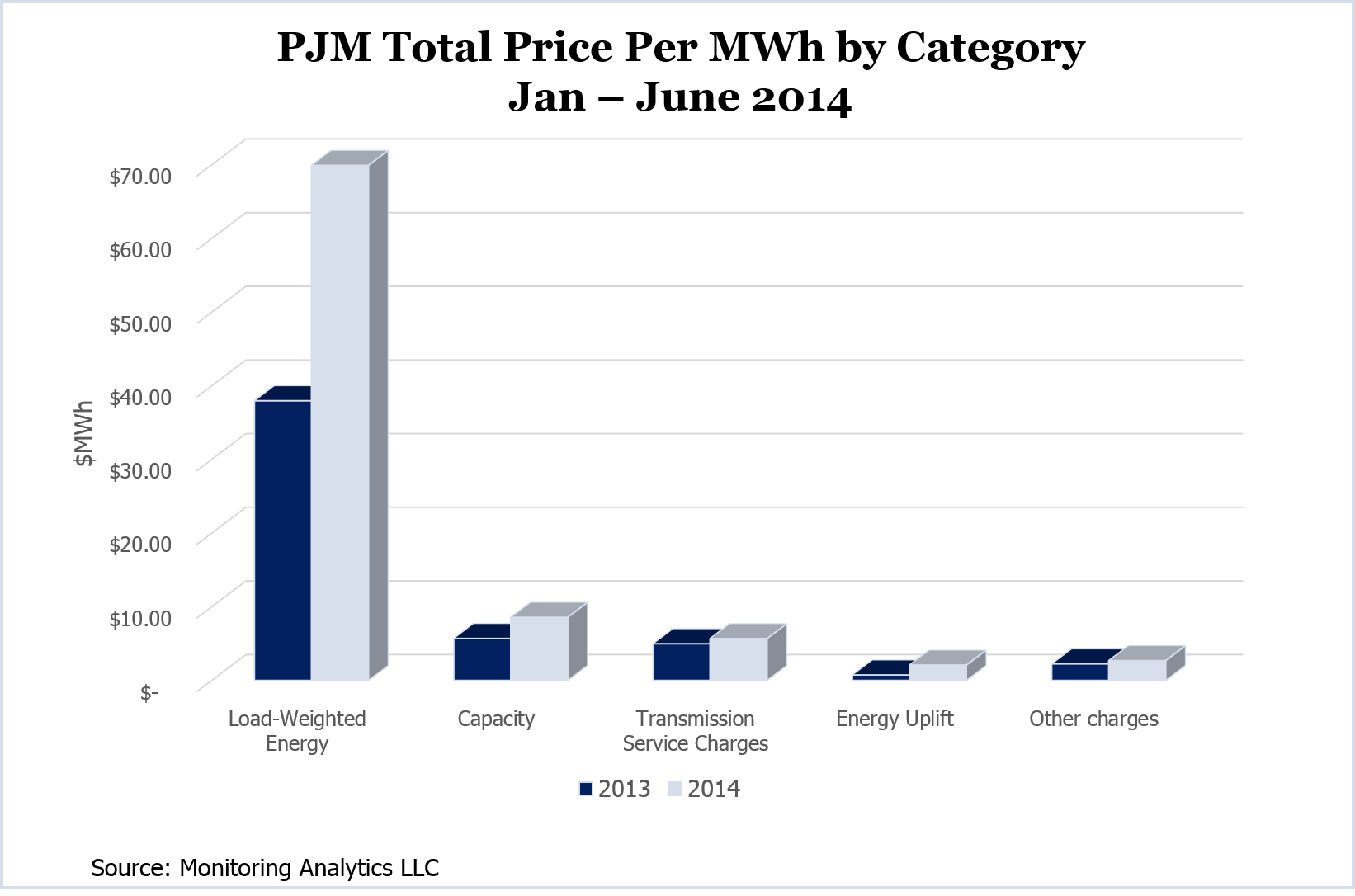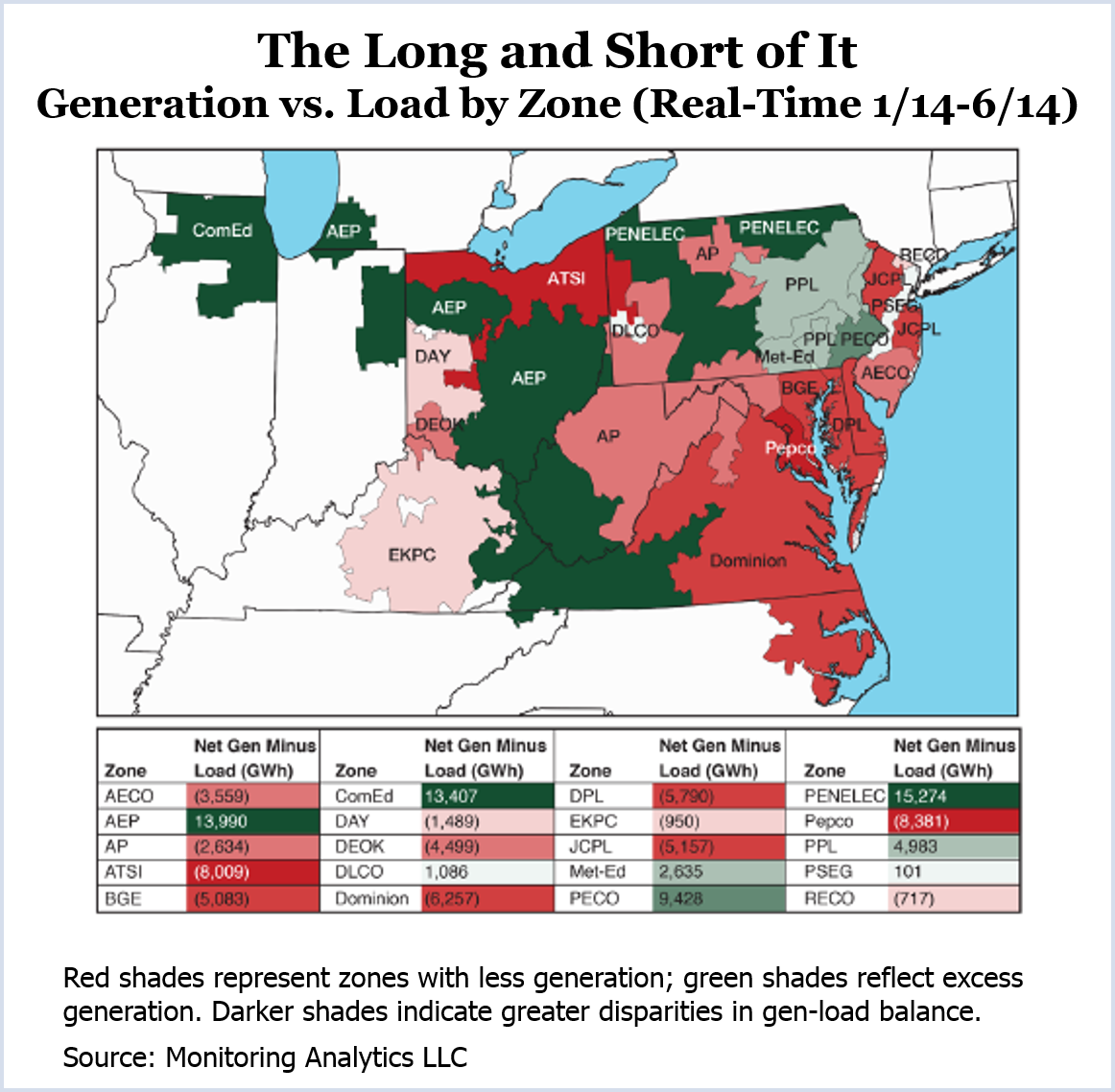
Instead, the Monitor used his newest State of the Market report to repeat longstanding recommendations and warn stakeholders not to overreact to the winter’s extreme weather, which sent prices skyward and brought the RTO uncomfortably close to having to cut loads.
“Particularly in times of stress on markets and when some flaws in markets are revealed, non-market solutions may appear attractive. Top-down, integrated resource planning approaches are tempting because it is easy to think that experts know exactly the right mix and location of generation resources,” the Monitor wrote.
But the Monitor said the lure of integrated planning, cost-of-service rates and subsidies for favored generation technologies should be resisted because “the market paradigm and the non-market paradigm are mutually exclusive.”
“Once the decision is made that market outcomes must be fundamentally modified, it will be virtually impossible to return to markets.”
The Monitor said criticism of the performance of PJM’s energy and capacity markets is legitimate. But he added, “Before market outcomes are rejected in favor of non-market choices, markets should be permitted to work.”
Capacity Prices Suppressed
The report repeats previous calls to eliminate limited demand response and the 2.5% demand offset from the capacity auction, saying the two combined to reduce revenues in the 2017/18 Base Residual Auction by $3.4 billion, or 31%.
“Premature and uneconomic retirements and the failure to make economic investments in new entry are both the results [of the price suppression]. … The most fundamental required change to the capacity market design is the enforcement of a consistent definition of a capacity resource so that all capacity resources are full substitutes for one another.”
The report said the 22% forced outage rate in early January was evidence that current capacity market rules have insufficient incentives and penalties.
“At present, only half of capacity market revenues are at risk for failure to perform on high demand days. Gas-fired units with a single fuel are exempt from any capacity market revenue impact that results from lack of fuel outages on high demand days. … An increase in capacity market prices must be accompanied by a strengthening of capacity market incentives so that customers can be assured of getting what they pay for.” (See related story, Reaction Muted as PJM Pitches New Capacity Product.)
Below are some statistical highlights from the 442-page report.
Prices, Revenues
The load-weighted average LMP was 84% higher in the first six months of 2014 than the first half of 2013 ($69.92/MWh vs. $37.96/MWh). High fuel prices played a large role in the increase. Had fuel prices been equal to the first six months of 2013, LMPs would have risen only 52% to $57.71/MWh.
All technology types received big increases in net revenues due to the extraordinary prices early in the year: combustion turbine (+730%); combined-cycle (+202%); coal (+338%); nuclear (+96%); wind (+32%); and solar (+14%). All figures assume that these are new plants.
Market Power

Intermediate generation averaged 1,719, at the high end of moderately concentrated, but rose as high as 5,693. FERC considers an HHI above 1,800 as highly concentrated (equivalent to between five and six firms with equal market shares).
Peakers averaged a highly-concentrated 6,119 and rose as high as 10,000, similar to patterns seen in 2013.
Nevertheless, market power mitigation ensured that energy, capacity and regulation markets produced competitive results, the Monitor said.
Marginal Units
Coal (47.6%) and gas (41%) units were marginal in all but about 11% of real-time hours in the first six months. Oil set prices for 5.7% of hours while wind units were responsible for about 5%.
In all but 1.4% of wind’s marginal hours, the marginal price was at (23%) or below (76%) $0/MWh.


